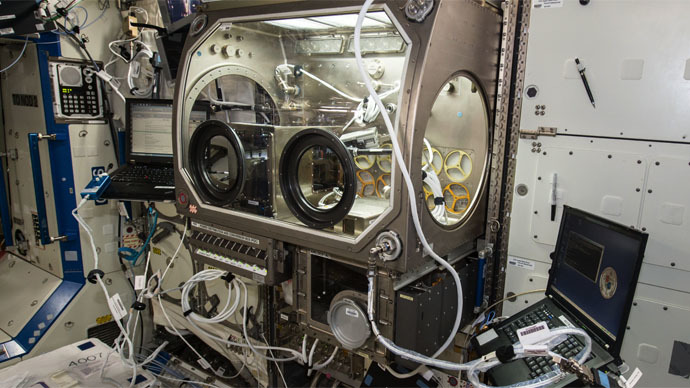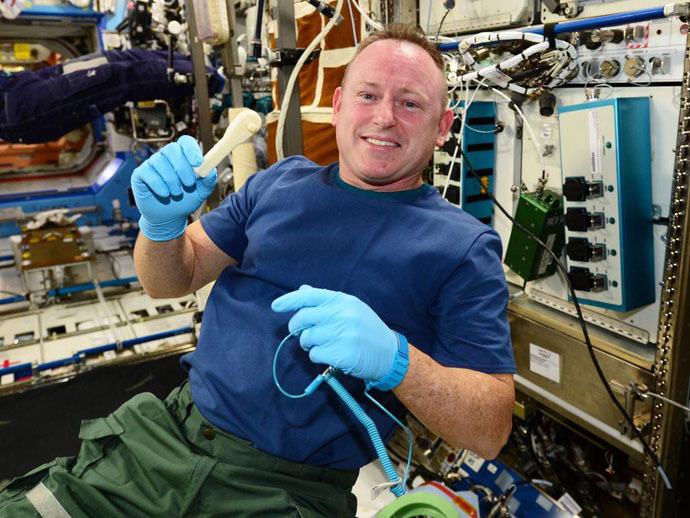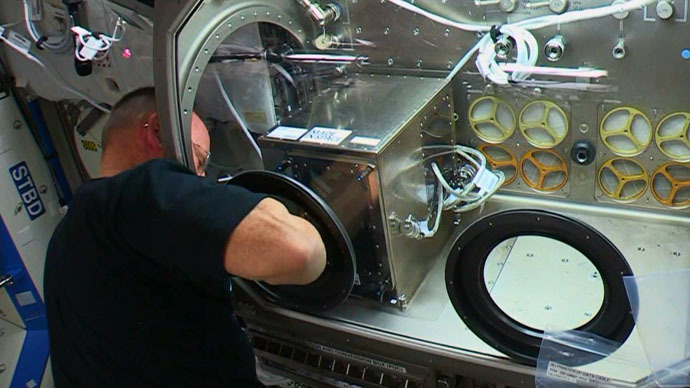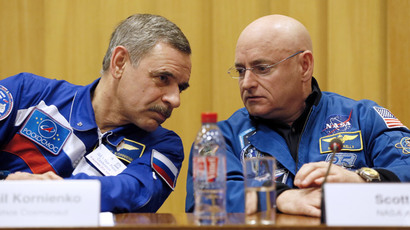Hardware design emailed to ISS and 3D printed in space

A 3D printer has crafted a part aboard the International Space Station (ISS), for the first time ever using a blueprint sent from Earth via an e-mail instead of an earlier uploaded design.
The 3D printer by the US startup Made in Space arrived at the ISS in September and has already performed 20 test runs in zero gravity.
It printed parts that were designed in advance, the majority of which were of no use to the station’s six-member crew representing Russia, the US and EU.
But the 21st run turned out to be a special one after ISS commander, Barry Wilmore, said that he urgently needed a ratcheting socket wrench.
The Made in Space specialists in California were quick to design the required tool and sent the blueprint to the ISS.

The part was built in accordance with a 3D process where
materials are applied layer by layer based on a digital
blueprint.
The startup’s co-founder, Mike Chen, has described the process of
delivering the blueprint to orbit over 400 kilometers above Earth
as “this is the first time we've ever 'emailed' hardware to
space.”
“Because it’s a lot faster to send digital data (which can
travel at the speed of light) to space than it is to send
physical objects (which involves waiting months to years for a
rocket), it makes more sense to 3D-print things in space, when we
can, instead of launching them,” Chen wrote in his blog.
READ MORE:‘No borders in space’: Russian cosmonaut, US astronaut get ready for longest ISS flight
The use of 3D printers at the ISS “translates to lower costs for experiments, faster design iteration, and a safer, better experience for the crew members, who can use it to replace broken parts or create new tools on demand,” he added.

The 21 rounds of prints will be returned to Earth where they’ll be studied and compared to similar parts produced on the ground before Made in Space sends a new, improved 3D printer to the station.
But Chen stressed that he’s especially excited about the impact 3D printers could have “on human space exploration beyond Earth orbit.”
“When we do set up the first human colonies on the moon, Mars and beyond, we won’t use rockets to bring along everything we need. We’ll build what we need there, when we need it,” he wrote.
Made in Space startup was launched in 2010 to design and produce a printer to be used in zero gravity in space.













